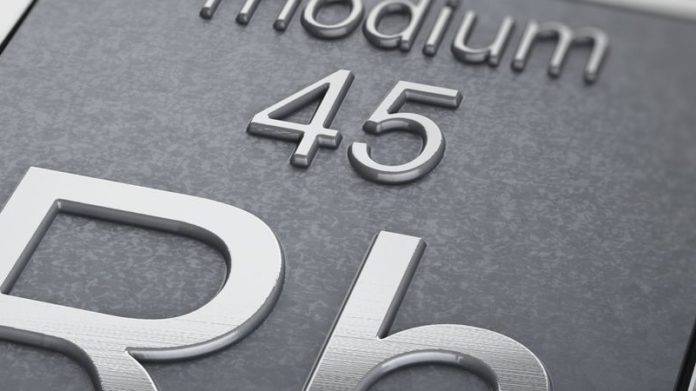
THE price of rhodium was tipped to remain strong and might even improve further in 2021, according to investment and asset management analysts.
The market for rhodium was small, even for a platinum group metal (PGM), and since it is mined as a by-product of platinum, there could be no supply side response.
Another analyst, SFA Oxford co-founder, Stephen Forrest, said an ever-increasing rhodium price might also “injure” or significantly disturb the entire basket of PGMs which consists of the major metals platinum and palladium.
On the demand side, China autocatalyst demand had rebounded strongly following the first quarter when regions of the country were placed in Covid-19 related lockdown.
Whilst demand recovery in Europe and US had been below expectations, demand had still fared better than supply. “On balance, the market is still looking strong and will be tight in 2021,” said Suki Cooper, executive director at Standard Chartered Bank.
“There is a strong possibility that rhodium will continue to rise,” said Mandi Dungwa, a portfolio manager at Kagiso Asset Management.
The analysts were responding to questions at the Joburg Indaba’s PGM day.
According to Impala Platinum (Implats), the rhodium price increased 161% to average $6,854 per oz during its financial year ended June 30. Revenue from the metal comprised 29% of the group’s R30bn total revenue – on a par with palladium and platinum revenue.
On a rand basis, the price of rhodium increased to nearly R35,000 per oz from about R17,000/oz a year ago. “When you introduce the rand into the basket is the difficult part of the equation,” said Simon Kendall, a portfolio manager for Prudential Portfolio Managers.
“The cycle has been young; it has been explosive, but it’s still young,” he said of the two-year improvement in PGM prices. “There has been no time for a capital response (spending on new projects to increase production). The next one to three years is about demand and that would be constructive to the basket,” said Kendall.
Whilst there is expected to be some supply relief from secondary sources of the metal, such as recycling, increasing emission standards in the automotive sector was likely to drive future demand.
BASKET PRICE MAY BE INJURED
The risk to rhodium supply was immediate, according to Stephen Forrest of SFA Oxford, the research house bought by Sibanye-Stillwater last year.
“South Africa must address the rhodium deficit market is what is ever-tightening emissions standards,” said Forrest of the implementation of environmental legislation in China as well as elsewhere globally.
Whilst the market deficit was “unlikely to be reversed by projects” restarts of mines as well as brownfields expansions would help to relieve pressure on the volatile rhodium market the price of which was “alarmist”.
Companies that have delayed projects or put them into mothballs will consider re-opening them, he said. “I am concerned the rhodium price will go higher and higher and injure the basket unless South Africa reacts quickly,” he said.
Forrest believed that semi-fabricators would start to substitute rhodium in autocatalysts with palladium which would have a knock-on effect on the platinum market.











